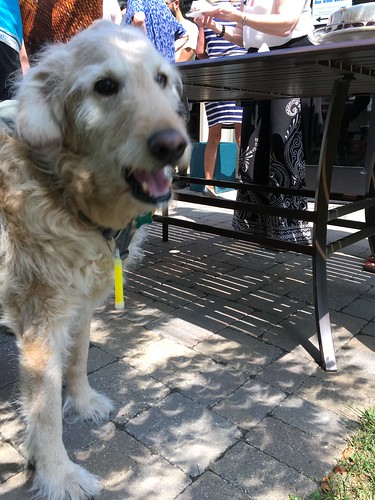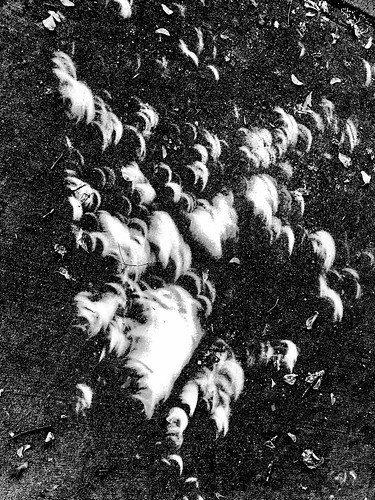Is reason, further studies should be done to explore this cancerogenic role of this parasite in human 58-49-1 biological activity populations considering different factors: 1.The oocyst stage, a common contaminant in surface water world wide is resistant to disinfection with chlorine applied in drinking water treatment plants at standard concentrations [23]. 2. Different evidences show that low challenge of Cryptosporidium oocyst is infective to healthy humans. For instance, a mathematical model based on data from the Milwaukee outbreak suggested that some individuals developed cryptosporidiosis following the ingestion of only one oocyst [24]. Data from another study among healthy adults without evidence of past cryptosporidiosis showed that a low dose of C. parvum oocysts was sufficient to cause infection [5]. 3. A study reported that colon squamous cell carcinoma risk was significantly elevated among AIDS patients who had cryptosporidiosis [25]. Furthermore, a recent epidemiological 22948146 study in Poland reported a frequency of 12.6 of cryptosporidiosis in patients with colorectal cancer [26].Supporting InformationTable S1 Normalized quantification of  parasites in ileocaecal region of mice inoculated with different oocysts doses and euthanatized at different times post-infection. (DOC)AcknowledgmentsThe authors thank Stephanie La Carbona and Catherine Cazeaux for ?providing the amplification reaction mixture conditions for the Cryptosporidium qPCR assay as well as the standard DNA plasmid developed in the framework of the ANR-09-ALIA-009 project and Lobna Gaayeb for her helpful and insightful comments.Author ContributionsConceived and designed the experiments: SB KG MC EDC CC VC GC. Performed the experiments: SB KG SG AM TC BD GC. Analyzed the data: SB KG SG AM TC MC PG EV EDC CC VC GC. Contributed reagents/materials/analysis tools: AM TC PG EV CC. Wrote the paper: SB KG EDC CC VC GC.Adenocarcinoma Induced by Low Doses of C. parvum
parasites in ileocaecal region of mice inoculated with different oocysts doses and euthanatized at different times post-infection. (DOC)AcknowledgmentsThe authors thank Stephanie La Carbona and Catherine Cazeaux for ?providing the amplification reaction mixture conditions for the Cryptosporidium qPCR assay as well as the standard DNA plasmid developed in the framework of the ANR-09-ALIA-009 project and Lobna Gaayeb for her helpful and insightful comments.Author ContributionsConceived and designed the experiments: SB KG MC EDC CC VC GC. Performed the experiments: SB KG SG AM TC BD GC. Analyzed the data: SB KG SG AM TC MC PG EV EDC CC VC GC. Contributed reagents/materials/analysis tools: AM TC PG EV CC. Wrote the paper: SB KG EDC CC VC GC.Adenocarcinoma Induced by Low Doses of C. parvum
Curcumin (1,7-bis-(-4-hydroxy-3-methoxiphenyl)-1,6-heptadiene-2,5-dione) and curcuminoids (demethoxycurcumin, bisdemethoxycurcumin, and cyclocurcumin) is known to possess potent anti-oxidant and anti-inflammatory actions [1?], but has never been considered as potential agents for respiratory health. Curcumin compounds (curcumins) are isolated from turmeric, an Indian yellow spice prepared from the dried rhizome of Curcuma longa, a member of the ginger family (Zingiberaceae), and used in large amounts as a food flavoring for curry meals in Asian populations. Turmeric has long been used traditionally for the treatment of coryza, indigestion, gallstone, hepatic disorders and rheumatism, and to promote healing of cuts and wounds. A more potent 1531364 antioxidant than vitamin E, curcumin inhibits in vitro lipid peroxidation and scavenges free oxygen and NO-basedradicals, thus preventing oxidative damage of DNA. [5,6] It also inhibits lipoxygenase and cyclooxygenase-2, [7] enzymes that are responsible for the synthesis of the pro-inflammatory leukotrienes, prostaglandins and thromboxanes, [8] and suppresses inducible nitric oxide synthase in activated macrophages. [9] Interestingly, curcumins demonstrated pulmonary protective effects against paraquat toxicity, [10] and attenuates Emixustat (hydrochloride) biological activity elastase- and cigarette smoke-induced pulmonary emphysema in mice. [11] Currently, curcumins are being investigated as candidate compounds for the treatment of colonic polyps and cancer, Crohn’s disease and dementia. [12] The possible protective effect of dietary curcumins in r.Is reason, further studies should be done to explore this cancerogenic role of this parasite in human populations considering different factors: 1.The oocyst stage, a common contaminant in surface water world wide is resistant to disinfection with chlorine applied in drinking water treatment plants at standard concentrations [23]. 2. Different evidences show that low challenge of Cryptosporidium oocyst is infective to healthy humans. For instance, a mathematical model based on data from the Milwaukee outbreak suggested that some individuals developed cryptosporidiosis following the ingestion of only one oocyst [24]. Data from another study among healthy adults without evidence of past cryptosporidiosis showed that a low dose of C. parvum oocysts was sufficient to cause infection [5]. 3. A study reported that colon squamous cell carcinoma risk was significantly elevated among AIDS patients who had cryptosporidiosis [25]. Furthermore, a recent epidemiological 22948146 study in Poland reported a frequency of 12.6 of cryptosporidiosis in patients with colorectal cancer [26].Supporting InformationTable S1 Normalized quantification of parasites in ileocaecal region of mice inoculated with different oocysts doses and euthanatized at different times post-infection. (DOC)AcknowledgmentsThe  authors thank Stephanie La Carbona and Catherine Cazeaux for ?providing the amplification reaction mixture conditions for the Cryptosporidium qPCR assay as well as the standard DNA plasmid developed in the framework of the ANR-09-ALIA-009 project and Lobna Gaayeb for her helpful and insightful comments.Author ContributionsConceived and designed the experiments: SB KG MC EDC CC VC GC. Performed the experiments: SB KG SG AM TC BD GC. Analyzed the data: SB KG SG AM TC MC PG EV EDC CC VC GC. Contributed reagents/materials/analysis tools: AM TC PG EV CC. Wrote the paper: SB KG EDC CC VC GC.Adenocarcinoma Induced by Low Doses of C. parvum
authors thank Stephanie La Carbona and Catherine Cazeaux for ?providing the amplification reaction mixture conditions for the Cryptosporidium qPCR assay as well as the standard DNA plasmid developed in the framework of the ANR-09-ALIA-009 project and Lobna Gaayeb for her helpful and insightful comments.Author ContributionsConceived and designed the experiments: SB KG MC EDC CC VC GC. Performed the experiments: SB KG SG AM TC BD GC. Analyzed the data: SB KG SG AM TC MC PG EV EDC CC VC GC. Contributed reagents/materials/analysis tools: AM TC PG EV CC. Wrote the paper: SB KG EDC CC VC GC.Adenocarcinoma Induced by Low Doses of C. parvum
Curcumin (1,7-bis-(-4-hydroxy-3-methoxiphenyl)-1,6-heptadiene-2,5-dione) and curcuminoids (demethoxycurcumin, bisdemethoxycurcumin, and cyclocurcumin) is known to possess potent anti-oxidant and anti-inflammatory actions [1?], but has never been considered as potential agents for respiratory health. Curcumin compounds (curcumins) are isolated from turmeric, an Indian yellow spice prepared from the dried rhizome of Curcuma longa, a member of the ginger family (Zingiberaceae), and used in large amounts as a food flavoring for curry meals in Asian populations. Turmeric has long been used traditionally for the treatment of coryza, indigestion, gallstone, hepatic disorders and rheumatism, and to promote healing of cuts and wounds. A more potent 1531364 antioxidant than vitamin E, curcumin inhibits in vitro lipid peroxidation and scavenges free oxygen and NO-basedradicals, thus preventing oxidative damage of DNA. [5,6] It also inhibits lipoxygenase and cyclooxygenase-2, [7] enzymes that are responsible for the synthesis of the pro-inflammatory leukotrienes, prostaglandins and thromboxanes, [8] and suppresses inducible nitric oxide synthase in activated macrophages. [9] Interestingly, curcumins demonstrated pulmonary protective effects against paraquat toxicity, [10] and attenuates elastase- and cigarette smoke-induced pulmonary emphysema in mice. [11] Currently, curcumins are being investigated as candidate compounds for the treatment of colonic polyps and cancer, Crohn’s disease and dementia. [12] The possible protective effect of dietary curcumins in r.
Nucleoside Analogues nucleoside-analogue.com
Just another WordPress site
